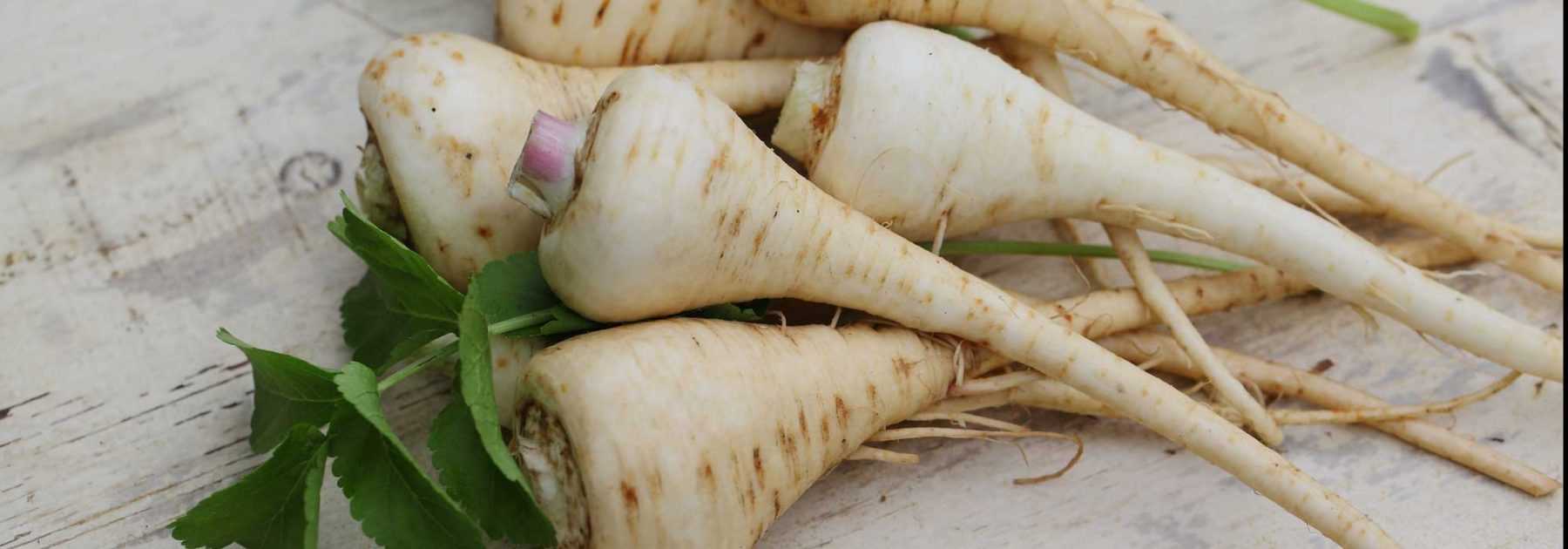
Parsnip: sowing, growing, harvesting, storing
Contents
The parsnip in a nutshell
- The parsnip is a root vegetable that belongs to the Apiaceae family, it is consumed for its fleshy root.
- This vegetable has seen a well-deserved resurgence in popularity in recent years.
- In the vegetable garden, its cultivation is simple as it’s a robust young plant with few pests and diseases.
- It’s no harder to sow than carrots but its seed viability is short: seeds only keep for 1 to 2 years.
- In cooking, parsnip can be prepared in various recipes (purée, soup, chips), it’s energising and good for your health.
Our expert's word
The parsnip, Pastinaca sativa, belongs to the Apiaceae family like carrots, parsley, celery etc… Cultivated since the Middle Ages, this vegetable was relatively little consumed in recent decades. However, it deserves its place both in the garden and in the kitchen and has seen a well-deserved resurgence of interest in recent years.
Unlike carrots, the choice of varieties is relatively limited, but there are still some wonderful discoveries to be made: ‘Tender and True’ is a variety renowned for its mild flavour and subtle taste; ‘De Guernesey’, a more traditional variety but very effective in the garden as it usually produces very well, ‘White Gem’ is a variety with good taste qualities, developing a sweeter flavour after the first frosts, and also better suited to heavy soils as its root is shorter.
In the vegetable garden, sowing is sometimes (wrongly) feared but its cultivation is simple and productive, ideal for beginners! Indeed, the parsnip is a hardy vegetable that resists diseases well and pests like carrot fly larvae. Just pay particular attention to sowing: the seed takes between 12 to 25 days to germinate and, during this time, care must be taken to ensure the soil does not dry out. Similarly, the seed’s germination capacity (i.e. its shelf life) is only 1 to 2 years. So you’ll need to buy new seeds often, unless you harvest your own (we’ll see how to do this in the “saving your own parsnip seeds” section below).
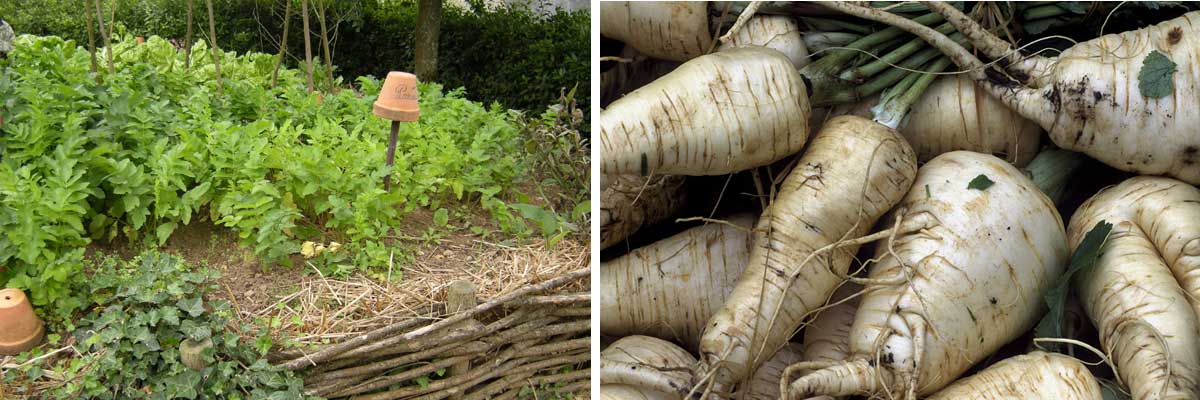
Description and botany
Botanical data
- Latin name Pastinaca sativa subsp. sativa
- Family Apiaceae
- Common name Parsnip
- Flowering Biennial grown as an annual
- Height 1 year (sometimes 2 years)
- Exposure Sun
- Soil type Deep, rich without fresh manure, light
- Hardiness hardy to very hardy
The parsnip is a plant originating from the Mediterranean region where wild forms of carrots and parsnips were gathered without clear distinction. A confusion that lasted until the 16th century, and also in terms of language, as “pastinaca”, “siser”, “gingidion” could refer to both carrots and parsnips. Scientifically, it is nevertheless accepted that the cultivated parsnip is a domesticated form of the wild parsnip (Pastinaca sativa L. subsp. sylvestris), a variety widely found in Southern Europe.
Etymologically, the genus name Pastinaca comes from the Latin Pastus meaning food, nourishment. The species name sativa means cultivated. The term parsnip is therefore derived from Latin.
The parsnip, Pastinaca sativa subsp. sativa is a biennial plant (grown as an annual) belonging to the Apiaceae family like carrots, fennel, and parsley. It consists of a root similar to a carrot, always white to cream in colour, sometimes yellowish, with more rootlets than a carrot. The leaves are tougher, larger and less divided than those of carrots. They are pinnate, lobed and dentate. In the first year the parsnip forms the root and foliage, in the second year it flowers then produces in summer a tall hollow flower stalk bearing multiple umbels of small yellowish-green flowers. The parsnip flower is allogamous and entomophilous, attracting numerous insects. The seeds at ripeness are light brown in colour.
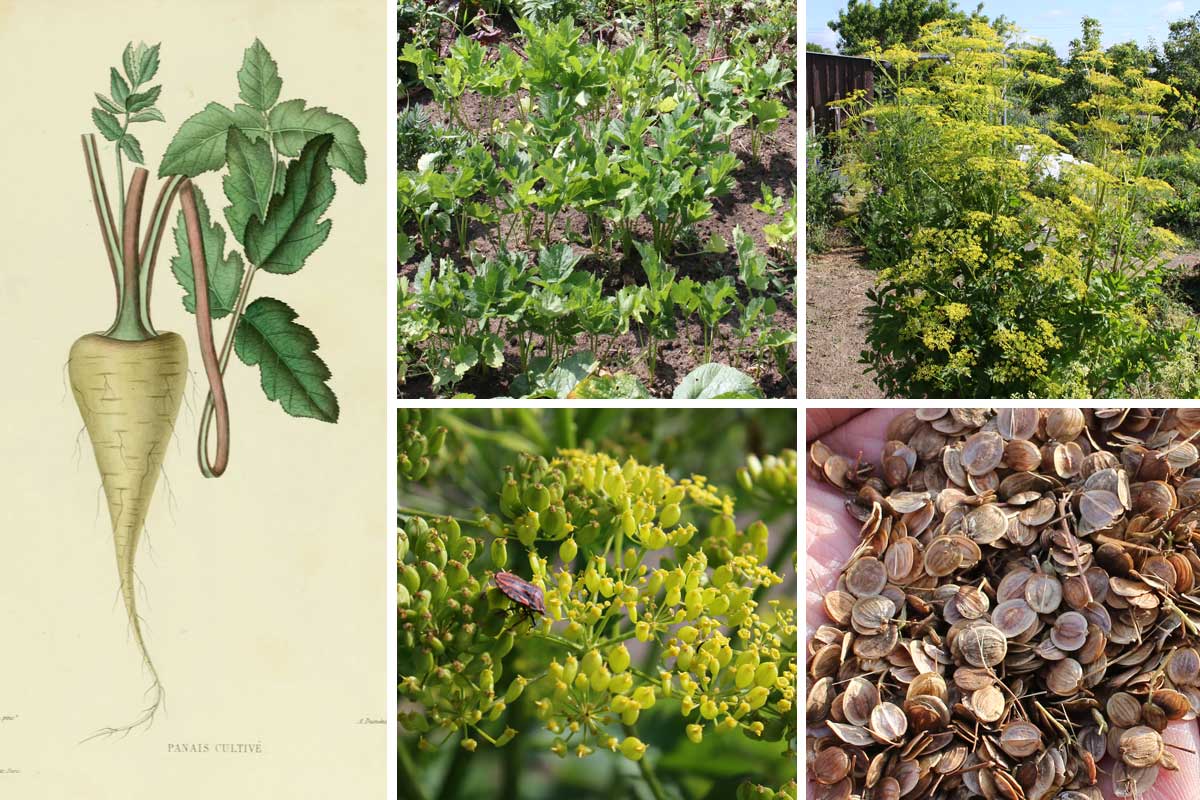
Parsnip varieties
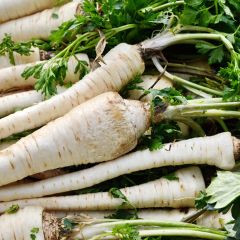
Parsnip Half Long Guernsey - Vilmorin Seeds
- Flowering time June to August
- Height at maturity 50 cm
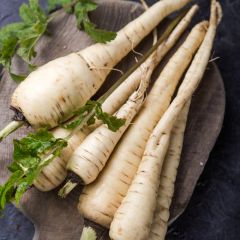
Parsnip Tender And True - Ferme de Sainte Marthe Seeds
- Flowering time June to August
- Height at maturity 50 cm
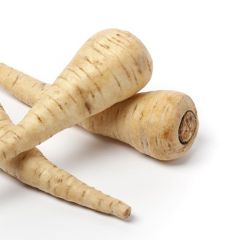
Parsnip Halblange Weisse - Ferme de Sainte Marthe Seeds
- Flowering time June to August
- Height at maturity 50 cm
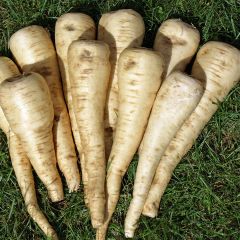
Parsnip Turga - Ferme de Sainte Marthe Seeds
- Flowering time June to August
- Height at maturity 50 cm
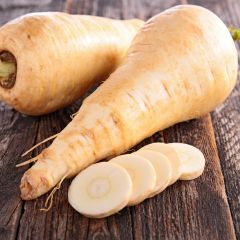
Parsnip White Gem
- Flowering time June to August
- Height at maturity 50 cm
Discover other Parsnips
View all →Available in 1 sizes
Available in 1 sizes
Available in 1 sizes
Available in 1 sizes
Available in 1 sizes
Available in 1 sizes
Available in 1 sizes
Available in 1 sizes
Available in 1 sizes
Available in 1 sizes
Sowing parsnips
Where and when to sow parsnips?
Parsnips can be sown in all regions of mainland France. They are generally sown from February to June. However, in the south of France, particularly in Provence, it is best to avoid sowing in June. In mild climates, it is possible to sow parsnips at the end of September.
How to sow parsnips?
Due to the length of its root, parsnips prefer deep soil, so it is essential to loosen the soil well before sowing. For this operation, use a broadfork or digging fork, loosen the soil deeply without turning it over. If necessary, add well-rotted compost to the bed and then level it with a rake, breaking up any remaining clods until you achieve a fairly fine structure. The seeds are sown directly in the ground in rows spaced 40 cm apart.
To sow:
- Draw furrows 1 cm deep.
- Sow one seed every 3 cm or so.
- Cover the seeds with 1 cm of fine soil.
- Firmly tamp down the sowing furrow with the back of the rake.
- Water gently with a fine spray to avoid creating a crust.
Parsnip germination takes between 12 and 25 days; water regularly and gently, as the soil must not dry out during this period.

Parsnip sowing stages – Photo: A. Gourmelen
Cultivation, care and companion planting
Parsnips require normal fertilisation (approximately 3 kg/m²) using well-rotted manure or mature compost, applied in late autumn or early spring. Be aware, parsnips cannot tolerate fresh organic manure. It’s a robust, hardy plant that encounters few diseases and pests.
Maintenance tasks include:
- Thin to 10 – 15 cm between young plants in the row when they have 3 to 4 leaves.
- Hoe and weed regularly.
- Water during dry, hot weather, in the morning or evening.
- Mulch when the soil is sufficiently warm.
Good companion plants for parsnips are beetroot, kohlrabi, onion, and radishes. It doesn’t like being near lettuce. I recommend only associating it for root consumption: if you’re saving parsnip seeds, don’t grow them near other vegetables. Indeed, when producing seeds (second year of growth), parsnips have an unfavourable effect (known as negative allelopathy) on their neighbours’ growth.
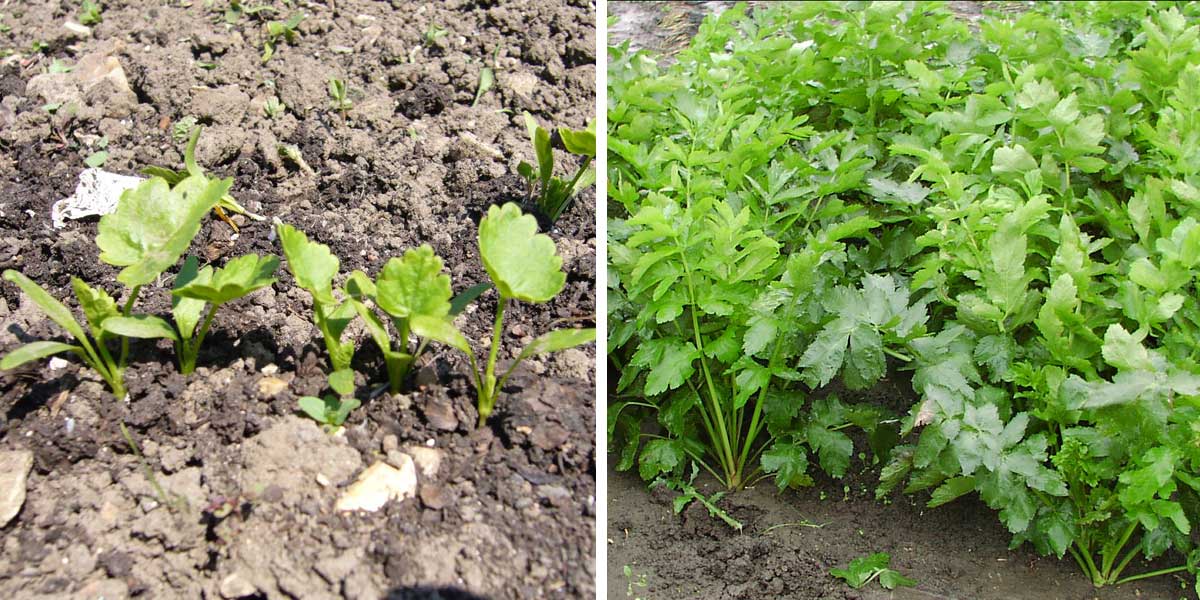
Harvest and store
The harvest takes place from October to November. Early parsnips are more tender and have a finer flavour, so don’t hesitate to harvest them earlier to enjoy them. As the root can be very deep, it’s best to use a garden fork to dig them up. Parsnips can be left in the ground and harvested as needed, especially in regions with mild winters. In this case, it’s advisable to cover the soil with straw or dry leaves. Otherwise, parsnips are generally dug up in November, the leaves are cut, and left to dry for a few hours on the soil before being stored in the cellar, in crates, alternating with layers of sand.
At home, they can be kept for up to 4 weeks in the bottom of the fridge, wrapped in a tea towel. Remember to cut off the leaves so that the roots remain as firm as possible. They can also be frozen, after being peeled and cut into pieces, then blanched for 3 minutes before being placed in freezer bags.
Uses and Nutritional Benefits
Parsnip has a quite distinctive flavour, it accompanies pot-au-feu, stews and flavours soups. It can also be enjoyed fried, stir-fried in a wok with soy sauce (for example), it is excellent mashed, in a gratin, soufflé or with béchamel sauce. Grated raw, it can be eaten as a crudité with vinaigrette, alone or accompanied by beetroot, carrot, celeriac.
Sometimes parsnips may have a slightly fibrous core, which is unpleasant in the mouth. If this is the case, you can easily remove it: cut it into four lengthwise sections, then remove the fibrous part from each segment with a paring knife.
Parsnip provides complex carbohydrates, fibre, has diuretic, nutritive and anti-rheumatic properties, and contains vitamins C and B and mineral salts (especially potassium).
Growing Your Own Parsnip Seeds
Parsnip is a biennial plant, seed production takes place in the second year. In regions with mild winters, it is possible to leave some consumption plants in the ground and let them flower in the second year. Simply keep the finest parsnips and remove those that are too thin. Leave about double the spacing – around 30 cm – between two parsnips intended for seed production.
In regions with harsher winters, or if you wish to carry out more advanced selection work, all roots will be removed in the first year and stored in a clamp or cellar. The parsnips will be selected according to the criteria that define the variety: not too many forks, good length and thickness at the collar, and good root regularity. The roots will be replanted in March of the second year, up to the collar level.
The flower stalk forms in late spring, in June, followed by seeds which mature by the end of July or in August.
A particular warning applies when harvesting seeds: parsnip produces furanocoumarins, photosensitive toxic agents. Under sunlight, these molecules can cause skin burns. It is recommended to protect your hands and body and harvest in the evening.
The umbels are cut and placed in a large sheet where they are threshed to detach the seeds. They can be passed through different sieves to remove debris and winnowed to discard any overly light seeds that will not germinate.
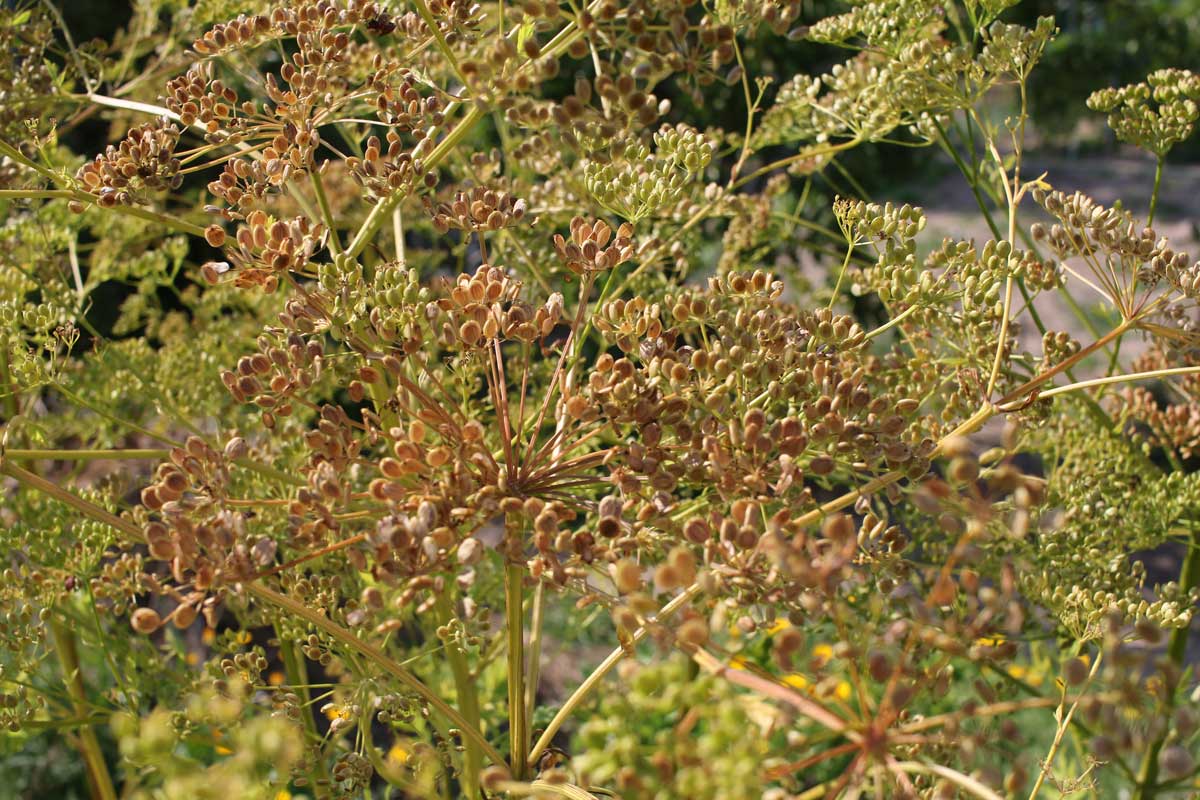
Parsnip seeds on the umbels – Photo: A. Gourmelen
Useful resources
- Discover in our shop our range of parsnip seeds.
- Pascale explains how to make vegetable crisps and how to choose the best parsnip variety!
- Find out how to identify and treat parsnip diseases and pests
Frequently asked questions
-
Why aren't my parsnips germinating?
Parsnip seed can be quite tricky! Firstly, its germination capacity – that is, the period during which it remains viable – is only 1 to 2 years, which is relatively short! Be sure to check the "use by" date or harvest year on your seed packets.
The second challenge is the germination time. Once sown, parsnip seed – like many other species in its family – can take up to 25 days to sprout, so patience is required. From the moment the seed is sown, it's important to monitor soil moisture and water if necessary until the seeds emerge.
- Subscribe!
- Contents
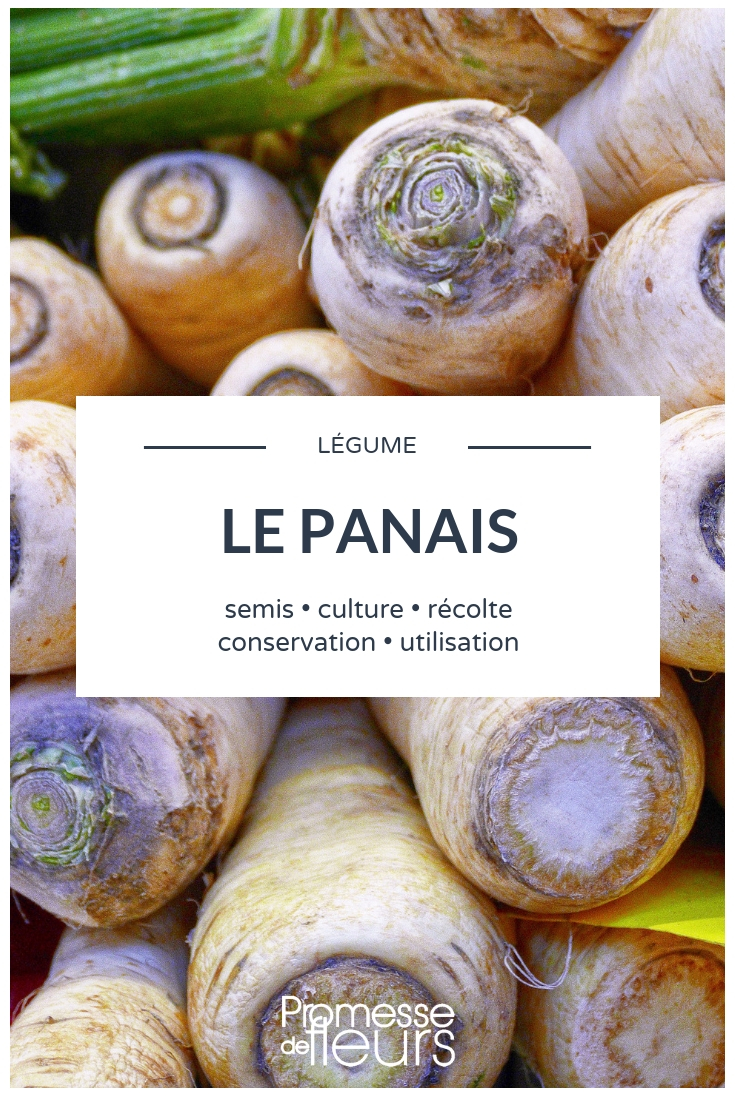




































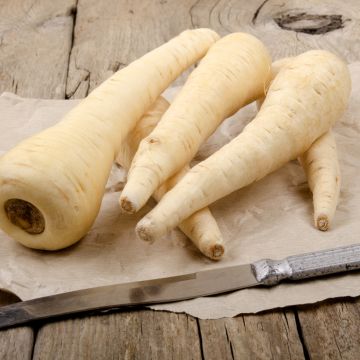

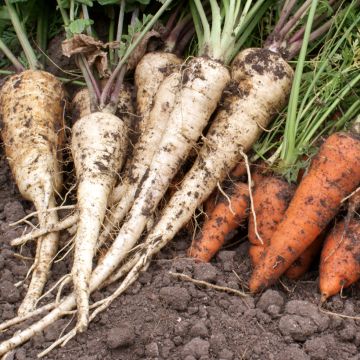
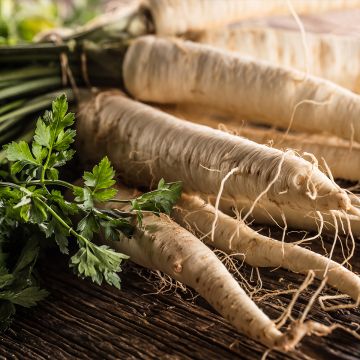



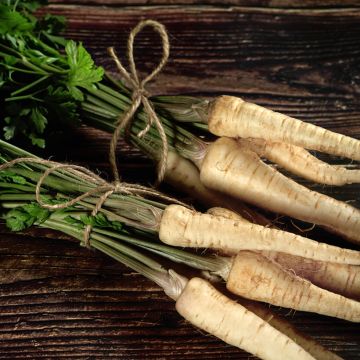
Comments